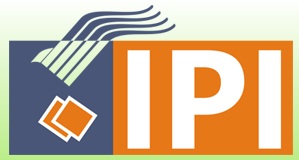ANALISIS KINERJA ALGORITMA HONEY ENCRYPTION DAN ALGORITMA BLOWFISH PADA PROSES ENKRIPSI DAN DEKRIPSI
Abstract
Algoritma Honey Encryption dan algoritma Blowfish merupakan dua buah algoritma kriptografi yang dapat digunakan dalam proses enkripsi dan dekripsi. Honey Encryption merupakan salah satu algoritma yang masih baru dalam ilmu kriptografi, untuk itu perlu dilakukan analisis kinerja algoritma tersebut pada proses enkripsi dan dekripsi. Berdasarkan studi perbandingan yang telah dilakukan diperoleh hasil bahwa jika ditinjau proses enkripsi dan dekripsinya, algoritma Honey Encryption jauh lebih efektif dan efisien dibandingkan dengan algoritma Blowfish dari segi keamanan dan tingkat kompleksitas enkripsi dan dekripsinya.
Full Text:
PDFReferences
Nahri Syeda Noorunnisa, and Dr. Khan Rahat Afreen, “Review on Honey Encryption Technique”, IJSR, Volume 5 Issue 2, February 2016, 1683-1686.
Rifkie Primartha, “Penerapan Enkripsi dan Dekripsi File Menggunakan Algoritma Data Encryption Standard (DES)” JSI, Volume 3, No. 2, Oktober 2011, 371-387.
Santhi Baskaran, S.V.L Sarat Chandra, P.Venkatesh, E.Silambarasan, and M. Dinesh, “Implementation of Enhanced Honey Encryption for IoT Security”, IJNTR, Volume-3, Issue-3, March 2017, 87-89.
Taufiqur, Rahman Muhammad., Aryo Pinandito, dan Eko Sakti Pramukantoro, “Perbandingan Performansi Algoritme Kriptografi Advanced Encryption Standard (AES) dan Blowfish pada Text di Platform Android” Jurnal Pengembangan Teknologi Informasi dan Ilmu Komputer, Volume 1, No 12, Desember 2017, 1551-1559.
DOI: https://doi.org/10.29103/techsi.v10i2.858
 Article Metrics
Article Metrics
 Abstract Views : 584 times
Abstract Views : 584 times
Refbacks
- There are currently no refbacks.
TECHSI Journalindexed by:
TECHSI Journalis a member of:
© Copyright of Journal TECHSI, (e-ISSN:2614-6029, p-ISSN:2302-4836).














